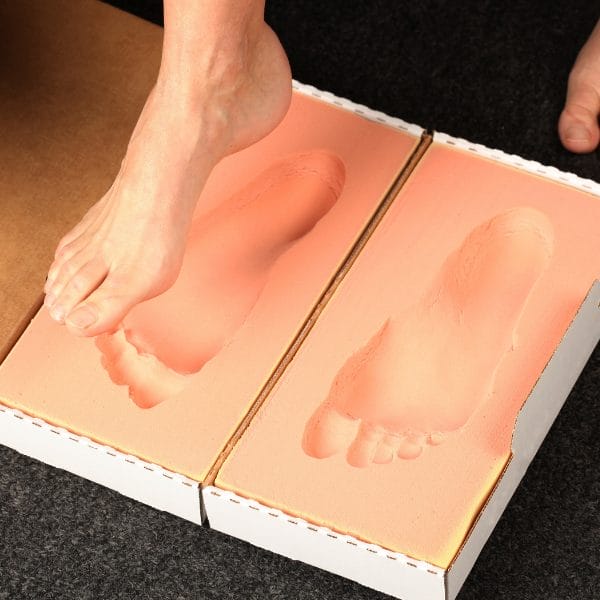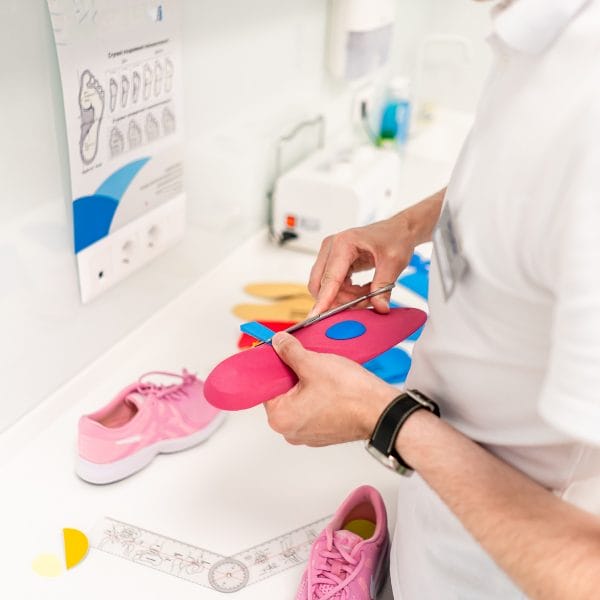Orthotics: What You Need to Know.
Foot orthotics are designed to support your feet, as well as help correct abnormal foot function.
PostureGeek.com Tweet

Foot orthotics are designed to support your feet, as well as help correct abnormal foot function. They can be used for flat feet or high arches and may also relieve pain caused by plantar fasciitis.
Orthotics can even help with back problems related to poor posture if they properly fit the needs of the individual wearing them. This article will cover what you need to know about these devices so that you can decide whether or not they would help improve your health!
What are orthotics?

Orthotics are devices designed to be inserted into shoes to provide orthopedic support for people with foot problems.
Orthotics or Orthoses are specialized supportive devices designed to support the arches of the feet. They often contain padding or other features which can make standing and walking more comfortable by cushioning the arches or heels of the foot.
Orthotics help to control the position and motion of a joint or joints. They can be used for medical purposes such as orthotic aftercare, orthopedic shoes for flat feet, diabetic foot ulcers.
In addition, several orthosis devices may provide relief from pain. Orthotics can also be used for non-medical purposes such as in work shoes and boots, orthopedic dress shoes or casual footwear.
What are Orthotics made from?

Orthotics are typically made from a combination of materials such as plastic, metal, and foam. They come in many sizes and shapes to accommodate different foot types – depending on whether you have a high arch or flat feet.
Do I need Orthotics?
Orthotics may be used in combination with other treatments to address various symptoms, generally relating to the feet and legs.
A Podiatrist may prescribe orthotics for you to wear when you are in severe pain or following an injury. Your Podiatrist will evaluate your orthotic needs, the function of your feet, and any injuries that may be affecting your orthotic placement.
A Podiatrist’s objectives for orthotic treatment might include the following:
- Helping a person’s foot or ankle operate more efficiently,
- Providing support to an ankle, and
- Lowering their risk of injury.
What are the goals of prescribing orthotics?
The goal of orthotics is to replace the natural stabilizing influence on foot movement when someone has recurrent arch problems like flat feet or overly high arches. These can cause an imbalance in the hips and pelvic girdle muscles. In addition, this postural change may result in muscle strain through exerting too much pressure on spinal discs or joints of the spine, causing them to wear out sooner or get inflamed.
Orthotics are orthopaedic devices prescribed to treat conditions such as flat feet, overpronation (foot rolls inward excessively), high arches and other foot abnormalities.
Foot and ankle position and the cascade effect on your posture.

Failure in one or several areas of the foot and ankle system can cause other issues further up the leg and beyond
PostureGeek.com Tweet
Failure in one or several areas of the foot and ankle system can cause other issues further up the leg and beyond. For example, dysfunctions on feet and ankles could cause injury at the shins, knees, hip and lower back.
When orthosis are prescribed for a patient, a podiatrist or other health specialist corrects any biomechanical problems that have developed in these regions. For example, suppose orthotics can improve foot function due to flat feet or overpronation conditions. In that case, it makes sense that they would also help to improve posture.
Issues caused by foot and ankle imbalances can frequently be seen with those presenting with Leg Length Discrepancy.
What types of orthotic devices are available?

There are several orthotic products on the market today – including shoes with removable insoles designed for specific orthotic devices. Orthotics can be classified as either custom orthotics or over-the-counter orthotics:
Custom orthotics are prescribed by a podiatrist and made in a laboratory-based on an impression of the foot taken from a cast. Custom orthoses may cost more than $500, but they deliver superior results for specific conditions such as plantar fasciitis.
Over-the-counter orthotics are mass-produced inserts that can be purchased without a prescription and usually cost less than $100. Over-the-counter orthotic devices come in many varieties, but the most common type is an arch support insert that fits into your shoe. These types may be good if you need temporary support or help with mild problems that do not require a podiatrist visit; however, they tend to be less effective than custom orthotics.
It will also be essential to consider how any orthotic inner sole will fit when buying shoes.
How orthotics work

One of the most important factors to consider is your foot arch when it comes to orthotics. If you have a high arch, you will likely need orthotics that are designed to support this type of foot structure. Conversely, if you have a flat foot, you will need orthotics that are meant to provide extra arch support.
How to wear orthotics

Orthotics should be worn every day for as long as you need them. Be sure to follow the instructions of your orthotic provider on how to wear them properly to get the most out of their benefits. Some orthotics can be worn while performing activities, such as running or playing sports.
Are orthotics right for you?
If you are experiencing pain in your feet or legs, orthotics may be a good option for you. Foot support can help correct abnormal foot function and improve posture, leading to relief from pain. Always consult with a qualified professional to determine if orthotics are right for you.
Finally
Orthotics are orthopedic devices that can help improve foot function, relieve pain in the feet and legs, improve posture-related back pain. Orthotic options vary depending on whether you have a high arch or flat feet. Orthotics should be worn every day for as long as you need them to get the most benefits out of it. Always consult with a qualified professional to determine if orthotics are right for you!
PLEASE NOTE
PostureGeek.com does not provide medical advice. This information is for educational purposes only and is not intended to be a substitute for professional medical attention. The information provided should not replace the advice and expertise of an accredited health care provider. Any inquiry into your care and any potential impact on your health and wellbeing should be directed to your health care provider. All information is for educational purposes only and is not intended to be a substitute for professional medical care or treatment.
